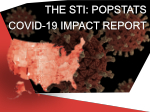|
|
Lifestyle Segmentation
Just Don't Call Me "Pigeonholed"Nobody likes to be pigeonholed. The concept is particularly distasteful in the U.S., where individuality reigns supreme. Yet, market research bears out a simple truth: We tend to live near people who share our demographic and lifestyle characteristics. One of the greatest advantages of geographic information systems is their ability to incorporate the many different types of data that define a population into a comprehensive consumer model, which can be used for market analysis. This innovative idea of consumer modeling is best represented by a divisional system of clustering, known as lifestyle segmentation. Standard U.S. Census Bureau demographic tabulations tell us that in 2000 the average American household (determined by dividing the Census totals for income, household, etc., by the number of Americans) consisted of a married couple and one child. Dad, age 30, worked as a blue-collar worker in durable manufacturing and Mom held a job as a white-collar clerk. Both were of West European ancestry, were high school graduates, and had a combined salary of a little over $22,000. Their $57,000, three-bedroom house was located in a Midwest suburb, and had an air conditioner, dishwasher, and clothes washer. While some households in the United States fit this generic portrait, overall this method of consumer profiling bears little resemblance to the reality of the majority of people living in the U.S. Clearly, overgeneralizing the Census Bureau data obliterates the many individual characteristics that make American communities unique. The basic premise of lifestyle segmentation revolves around the concept that people tend to live in clusters of similarity, both economically and culturally. And those individuals who share similar purchasing power and buying characteristics inhabit these geographic groups or clusters. As a society, we have a tendency to seek our living spaces in regions that reflect our economic status, belief systems, and ethnic orientation. Our educational and occupational backgrounds are part of the determining process, influencing where we live and what we like and buy in the marketplace. The best examples of consumer segmentation lie in the inner-city boroughs of New York. The plurality of ethnicity there is great, but the segmentation is well defined by the natural clustering habits of the population. There are neighborhoods that are distinctly Italian, Jewish, Catholic, and young Bohemian, where you will probably find a commonness of income and education levels, as well as a distinctive pattern in buying trends and purchasing power. Lifestyle segmentation systems combine the U.S. Census Bureau data with current-year aggregated consumer-demand data to form a comprehensive database for calculating consumer purchasing trends. On a yearly basis, new information is incorporated to adjust for changes in economic conditions, growth, and migration. This precision tool may be used for demographic targeting studies by businesses in any industry. It accurately classifies every U.S. household into a unique market segment and can be integrated with consumer survey research data to give a comprehensive picture of a company's best customers and prospects. When using a cluster segmentation system, companies can analyze small demographic areas to pinpoint precise locations for improving their odds of finding prospective consumers. Or they can reverse the concept and plot sales records to learn the lifestyle characteristics of their customers. Either way a company can gain valuable insight into who is buying what, and where exactly those purchasers live. While we won't go so far as to say that lifestyle segmentation systems pigeonhole the U.S. populace, there is no denying the validity of a well-known expression: Birds of a feather really do flock together. |
AnnouncementsA Migrating Population - Using IRS Data to Track Movement Patterns
The PopStats™ COVID-19 Impact Report:
|

